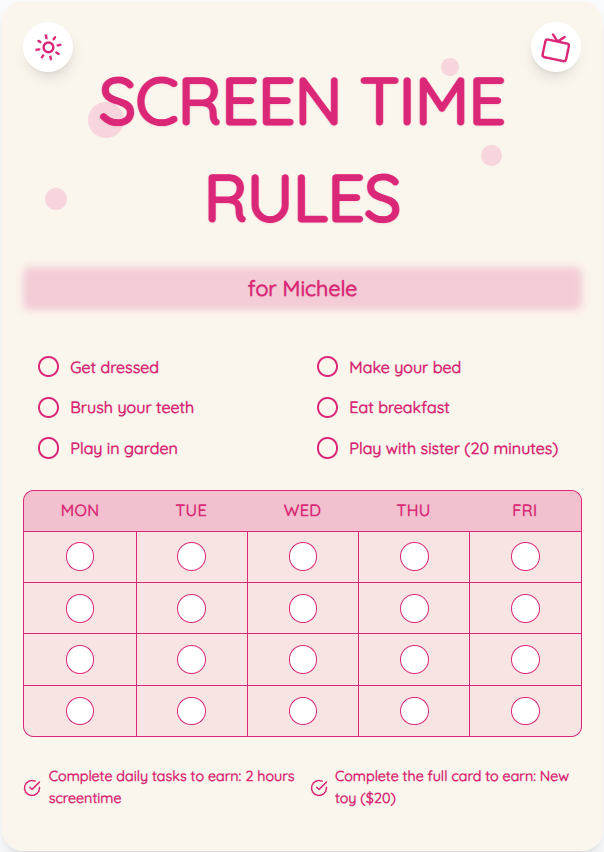Demystifying Screen Time: What Every Parent Needs to Know
Screen time has become an integral part of children's lives, but understanding its implications and managing it effectively can be challenging for parents. This guide aims to provide insights into the definition of screen time, its impact on child development, and actionable strategies for parents to promote a healthy digital balance in their families.
See What Your Screen Time Chart Will Look Like
Here's an example of a beautiful, customizable screen time rules chart you can create for your family

What is Screen Time?
Screen time refers to the amount of time a person spends using devices with screens such as smartphones, tablets, computers, and TVs. It includes activities like watching videos, playing games, or engaging in social media. While screens offer educational and entertainment value, excessive screen time can have negative effects on children's physical health, mental well-being, and social skills.
Impact of Excessive Screen Time
Excessive screen time has been linked to various issues such as obesity, sleep disturbances, behavioral problems, and reduced academic performance in children. It can also affect their social interactions and cognitive development. Understanding the risks associated with prolonged screen use is crucial for parents to make informed decisions about managing their children's screen time.
Put These Tips Into Action
Create a custom chart to implement these strategies with your child
Strategies for Managing Screen Time
To promote a healthy digital lifestyle, parents can set limits on screen time, establish tech-free zones at home, encourage outdoor activities, and engage in screen-free family time. Using tools like ScreenTimeRules.com's screen time charts can help create a visual schedule that balances screen time with other activities. By establishing consistent rules and modeling positive screen habits, parents can guide their children towards responsible screen usage.
Practical Tips for Success
- Create a family media plan outlining screen time rules and expectations.
- Encourage offline hobbies and activities to reduce screen dependency.
- Use parental control features to monitor and limit screen time on devices.
- Lead by example by practicing healthy screen habits yourself.
Frequently Asked Questions
How much screen time is recommended for children?
The American Academy of Pediatrics suggests limiting screen time to 1-2 hours per day for children aged 2-5 and promoting consistent limits for older children.
Are educational apps considered beneficial screen time?
While some educational apps can offer valuable learning experiences, moderation is key. Parents should ensure a balance between educational screen time and other activities.
How can screen time affect children's sleep?
Excessive screen time before bedtime can disrupt children's sleep patterns due to the blue light emitted by screens. Establishing a tech-free wind-down routine can help improve sleep quality.
By understanding the definition of screen time, recognizing its impact, and implementing practical management strategies, parents can foster a healthy relationship with screens for their children. Explore ScreenTimeRules.com's screen time charts to create a balanced digital environment that supports child development and family harmony.
Ready to Transform Your Family's Screen Time?
Join thousands of parents who have successfully managed screen time with our customizable charts.
